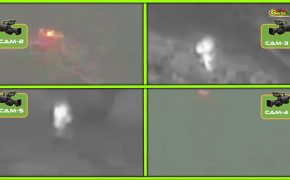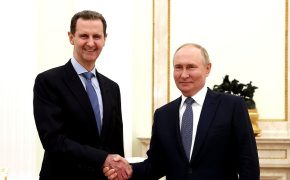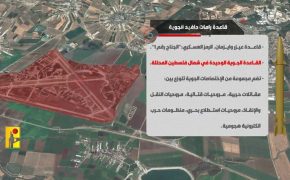Answering Key Questions about Yemen War – Part Four

Details of Ali Abdullah Saleh visiting Iran, knowing Southerners leaders, formal announcement of Ansar Allah and Iran coalition and investigating future evolutions of Yemen
Read “Part 3” here: Answering Key Questions about Yemen War – Part Three
10. Recent visit of Muhammad Abdulsalam, spokesperson and chief negotiator of Ansar Allah to Iran and meeting with Leader of Islamic Republic and Iranian officials, how do you analyze it?
Generally it is stated in analyses that this meeting was an official announcement of Iran-AnsarAllah coalition. But we know that the coalition of Ansar Allah and Islamic Resistance was formed from the beginning of Ansar Allah and its leaders were always following Velayat-e faqih (top Shia scholar and leader) and martyr Sayyid Hussein Badreddin al-Houthi had the same stance.
Important points regarding this trip:
– Leader of Iran Revolution emphasized on neutralizing the plan of dissociation of Yemen and Ansar Allah’s firm response to it by independent Yemeni-Yemeni negotiations.
– Muhammad Abdulsalam carrying Janbiya(Yemeni dagger) in meeting with Leader of Revolution, in addition to show the Yemeni gentility and courage and Iranians trusting Yemenis, is a symbol of Ansar Allah to jihad against enemies and show teeth.
– Assigning Yemeni ambassador in Iran; means Iran considers ambassador of Rescue Government as official political representative of Yemen and Mansour Hadi’s resigned government (due to the resignation of the President and Prime Minister) is out of office according to law.
– Three way negotiation between Iran, Ansar Allah and Europeans, which is more in the sense of Sweden’s agreement.
– Sayyid Abdul-Malik Badreddin al-Houthi’s letter to Imam Khamenei, whose contents are not clear and there are several guesses about it.
11. How was Iran and Ali Abdullah Saleh relationship? What are details of Ali Abdullah Saleh trip to Iran?
Ali Abdullah Saleh supported Saddam, Iraqi dictator, during the eight years of holy defense and after it, to control Yemeni Shias who under influence of Iran, tried to fix his relationship with Iran.
In that sense, Ali Abdullah Saleh visited Iran on 13 April 2000 and in his meeting with Leader of Revolution, there was words of general situation in the region and necessity of confronting Israel and USA. After this visit, Iran’s President visited Yemen in 2003. But these trips did not influence Saleh’s confrontation with Sayyid Hussein Badreddin al-Houthi’s revolution and due to martyrdom of Sayyid Hussein and Saleh’s support for Saudi family against Iran, the relationship went cold.
12. Who is Hani Ben Brek?
45 years old Hani Ben Brek is deputy of the Yemen’s Southern Transitional Council and the main coup maker in Aden.
He was born in Addis Ababa, capital of Ethiopia, to a Yemeni father and an Ethiopian mother and migrated to Aden at 16. Later he joined Yemen’s Al-Qaeda and went to Afghanistan to fight against USSR and after 3 years came back to Aden.
After that, Hani participated in Southerners confronting against Ali Abdullah Saleh and was arrested in 2010 due to planting a bomb in vehicles.
After parole, he joined ISIS alley and representative, Ansar al-Sharia, in Abyan and after ISIS defeat fled to Aden and took refugees in Aidarus al-Zoubaidi’s home. In 2017, Aidarus al-Zoubaidi established the Southern Transitional Council with support of Hani Ben Brek and request to separate from northern part of Yemen.
Using his cleverness and rhetoric speeches with the help of Emirates, he could take Aden from Mansour Hadi’s control.
Hani Ben Brek is fond of his assassinations and terrorist acts and call them Jihad. Media consider him the military and political arm of Aidarus al-Zoubaidi, head of the Southern Transitional Council.
13. Considering the recent evolutions of Aden and conflict between Emirati and Saudi proxies, how do you predict Yemen’s future?
Future of Yemen will form due to many different reasons such as operations, leaders of different movements decisions, foreign countries interventions, tribes stances and people’s trends. Thus there is no certainty.
As mentioned in previous articles, conflict between Emirati and Saudi proxies were predicted and coalition between any of Yemeni movements is predictable.
Engagement between UAE and Saudi proxies, i.e., Southerners and Mansour Hadi’s government, has root in the contrast of their ideologies and ambitions.
Southerners want separation and revive Southern Yemen and Mansour Hadi wants Ansar Allah’s neutralized and control the whole Yemen. Therefore, reaching a solution even with Saudi coalition’s enforcement seems impossible.
They agree upon confronting Ansar Allah but have different goals and ways; their conflict was predictable.
What can be said as analysis of the current situation is that South of Yemen Transition Council has support of most of the people in south and UAE and used Mansour Hadi’s government incompetence to reject them from Aden and other southern cities.
Eastern tribes are also close to UAE and there’s possibility of them confronting Saudis.
Hadi’s government does not have any base after losing Aden and has an unstable and exilic condition. More political or military blows from either Ansar Allah or Southerners will result in their abolition.
On the other hand, Ansar Allah has an unknown situation in other fronts. Although their aerial capabilities has increased greatly but the operation to reclaim occupied lands has not started yet. Operations north of Al Dhale and recently west of Al Jawf shows Ansar Allah’s enough power to reclaim lost lands but Ansar Allah seems to be waiting for important changes in enemies campaign.




Comment